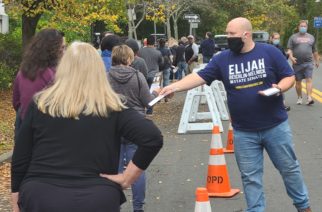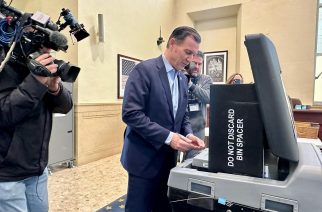
With just six weeks remaining in the legislative session, a coalition of former prisoners, justice reformers and state lawmakers are trying to pass the Humane Alternatives to Long-Term (HALT) Solitary Confinement Act.
The bill (S.4784/A.3080) would impose a 15-consecutive-day limit to solitary confinement in state prisons and a 20-day total in a 60-day period. This 15-day limit will be in accordance to a United Nations ruling named the Mandela Rule that defines solitary confinement as torture if it exceeds 15 consecutive days.
The bill was introduced on January 26 in the Assembly Correction Committee. Specifically, it would
limit the time an inmate can spend in solitary confinement, end solitary confinement for vulnerable
people, restrict the criteria that can result in such confinement, and create more “humane and effective” alternatives to solitary.
A coalition called Think Outside the Box, which helped organize a lobbying event and press conference in Albany event last week, says at any given time there are 4,500 inmates in solitary confinement in state prisons and local jails across New York.
“We need a comprehensive statutory solution like the HALT Solitary Confinement Act to remedy this problem,” Assemblyman Jeffrion Aubry, sponsor of the Assembly bill said and the former long-term chair of the Corrections Committee. “The research is out there and the numbers are clear: targeted rehabilitation programs are more effective at reducing recidivism, than punitive and sometimes arbitrary solitary confinement.”

The Assembly version of the bill has 65 co-sponsors and multi-sponsors while the Senate version has 16. The Senate version of the bill was introduced into the Crime Victim, Crime and Correction Committee on March 1, by Senator Parker.
The Mandela Rule, which was a revision of the 1955 United Nations Standard Minimum Rules for the Treatment of Prisoners, was adopted on May 22, 2015. However, despite being labeled as torture by the UN the issue of arbitrary solitary confinement sentencing did not gain traction until last year when a New York Times expose echo clear evidence of racism and brutality in New York state’s prisons’ disciplinary system.
The New York Times had conducted a review of tens of thousands of inmates’ disciplinary cases finding that Latinos and black men were sent to solitary confinement as much as twice as often than white men in some facilities and were usually subjected to longer stays in solitary.
The issues with solitary were further spotlighted by the recent high-profile case of Kalief Browder. Among other injustices he faced while at Rikers Island, Browder spent 800 out of the over 1000 of his days at Rikers in solitary confinement. After being exonerated Browder was unable to cope with the psychological damage incarceration had inflicted on him and took his life.
“Torture is torture and we can’t stand for it,” Akeem Browder, Kalief’s brother, said. “The silence behind these walls end with us, and that’s why we have to be the voices for those behind it.”
According to the DOJ’s 2017 report on the use of restrictive housing, at its worst and without regard for basic standards restrictive housing can cause “serious and long-lasting harm.”
The bill’s justification states, “Studies have long and consistently found that subjecting people to segregated confinement for 22 to 24 hours a day without meaningful human contact, programming, or therapy often causes deep and permanent psycho-logical, physical, developmental, and social harm.
Last year after receiving a thorough review of the use of solitary confinement, former President Barack Obama filed executive orders to ban the sentencing of juveniles and low-level adult inmates to solitary confinement.
“At Rikers Island, individuals with experience in solitary confinement were almost eight times more likely to harm themselves than those in the general population,” said Bandy X. Lee, expert forensic and correctional psychiatrist at Yale University. “In a California prison prisoners held in isolation were 33 times more likely to harm themselves than in the prison’s general population.”
The impact of isolation is often compounded by alleged abuse by correctional officers while in isolation. “While I was in the box the police would go through my mail and taunt me about personal things they knew were bothering me,” Advocate and former inmate Jack Davis said. “But nobody says anything because it’s our word against theirs and we’re criminals.”
According to Dr. James Gilligan, a psychiatrist in the NYU School of Medicine and former Director of Mental Health Services for Massachusetts prisons, solitary confinement does not only potentially post a danger to the individual in captivity, but also places anyone who may interact with that individual once they are released in harm’s way. He recanted incidents in which inmates after being released directly from solitary would commit deadly crimes.
“During a summer in Massachusetts, a man in prison for a nonviolent crime who had spent years in solitary for breaking minor [prison] rules finally was let out onto the street directly from solitary,” Gilligan said. “Then within two days, he killed an MIT student hitchhiking in Boston. After this happened one of the older and wiser corrections officers that I worked with said, ‘You can lock a dog in a closet for a month, but I don’t want to be the one standing outside of it when you let him out.’”











